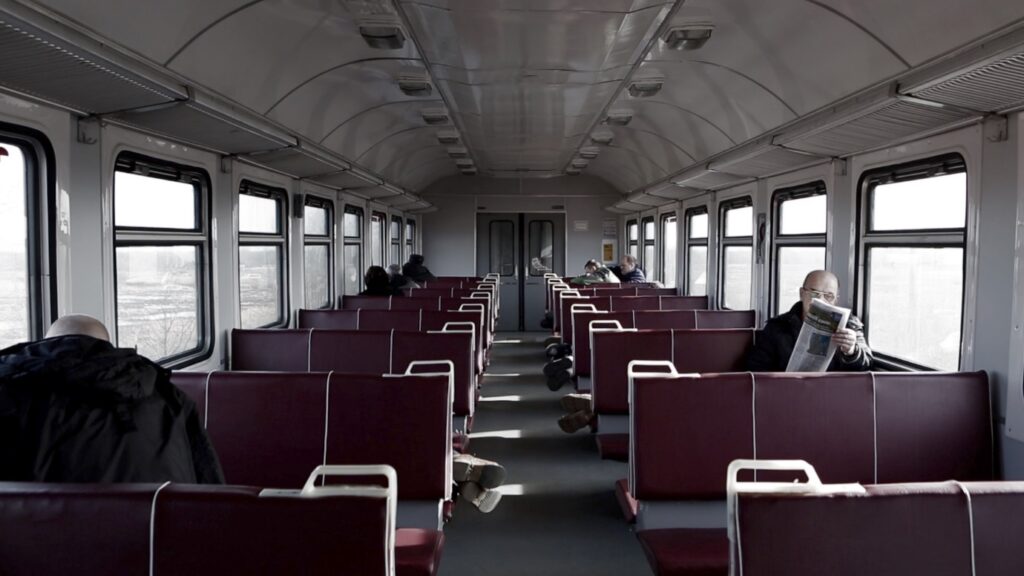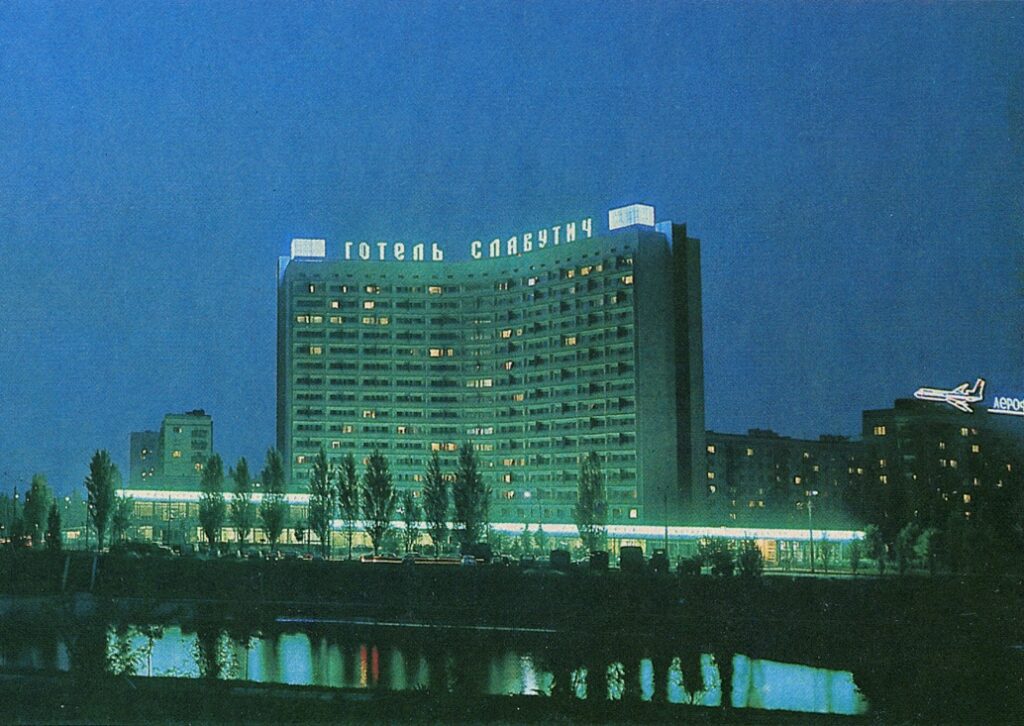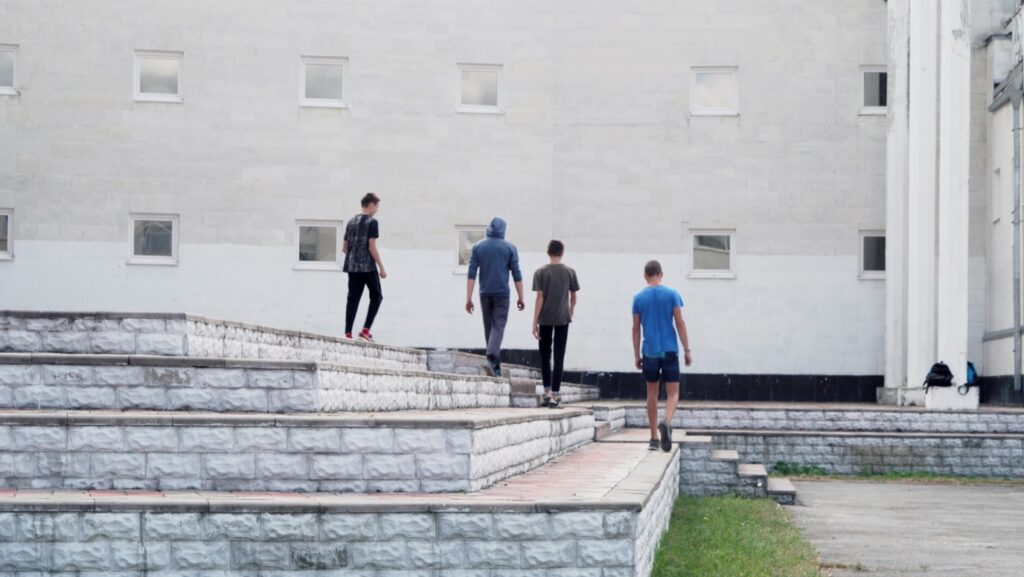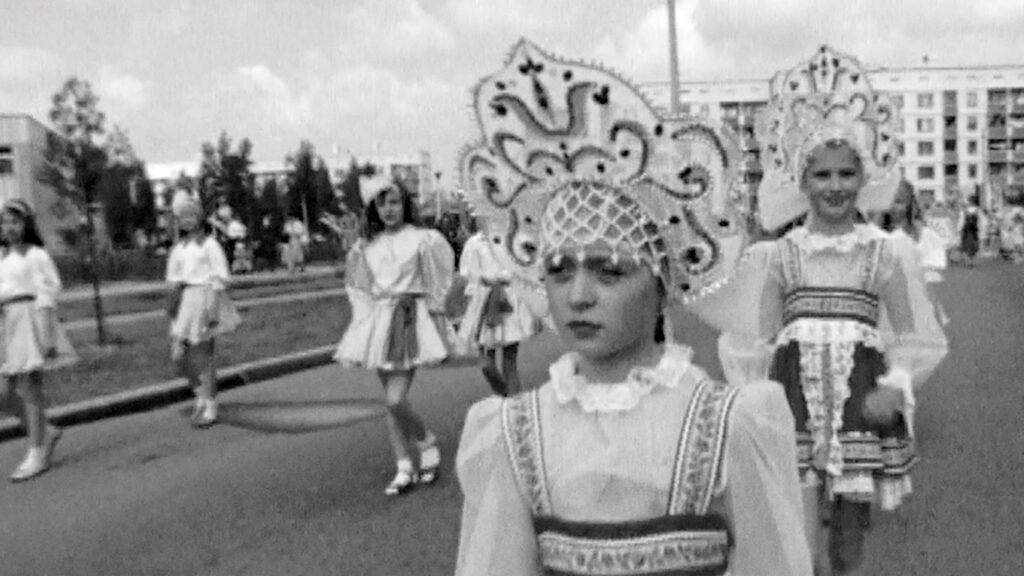The Shift (2019)
Hotel Slavutych (2019)
Double Exposure (2020)
The Shift (2019, 10 min loop) portrays a commuter train riding between the restricted Chernobyl Exclusion Zone and Slavutych, a city built after the nuclear catastrophe to house its workers. In 1986 Chernobyl power station reactor No. 4 was the site of one of the biggest nuclear catastrophes in history. The accident still marks the beginning of the downfall of former USSR. Before the 2022 war, every morning 3000 people took the workers’ train to the decommissioned nuclear power plant, which needs continued maintenance. The video studies the shape of the train as an architectural non-space which functions as a vacuum in movement through multiple dimensions of time and space.

The installation Hotel Slavutych (2019) consists of a slide projector showing images of postcards depicting a modernist hotel built in 1972 in Kyiv, Ukraine. The building is an example of typical Soviet architecture, standing like a monument for lost political ideals. In the USSR hotels used to function as in-between-spaces where exceptional rules applied. Offering, for instance, a variety of products which were otherwise not available on the streets.

The postcards offer a variety of images of the same building in its multiple utopian representations like a polished architectural render. Postcards used to be the only medium which could travel outside of the closed territory of the USSR functioning as marketing leaflet for the soviet ideology.
The slide projector is positioned on top of a black socle, projecting the images onto a relatively small volume that’s equally installed on top of the socle. It virtually rescales the hotel building as an architectural model, turning around the modes of representation.

The video Double Exposure (2020, 14 min) shows archival material and recently shot footage, both in Slavutych – a city northern Ukraine, built for the evacuated workers of the Chernobyl Nuclear Power Plant in 1986-1988. For the construction of the city, architects and workers from Estonia, Latvia, Lithuania, Georgia, Armenia, Azerbaijan, Russia and Ukraine were involved. As a result, the city is divided into eight districts designed and named after the capitals of the eight contributing Soviet republics. Slavutych is the last atomic town, the last ideal city to have been built in Soviet Union.
Double Exposure follows a group of young athletes who represent the generation born after the fall of socialism. We see them physically interacting with the shapes and forms offered by the diverse historically loaded cityscape. The dynamic exploration of the city is accompanied by Soviet propaganda archive material from the days when the city was built and first opened for the public. The film reveals the confrontation between the town’s soviet past and its younger generation, contemporary millennials. How does the post-Soviet youth deal with the present when being surrounded by the remains from the failed past?

Ingel Vaikla (Tallinn, Estonia, 1992) is visual artist and filmmaker based in Brussels. In 2018– 2019, Vaikla attended the postgraduate residency programme HISK in Ghent. Since 2019 she is engaged in practice-based PhD studies in Audiovisual and Visual Arts at PXL-MAD / UHasselt. In 2021 she did a residency at Wiels in Brussels. Vaikla’s artistic research focuses on the relationship between architecture and its users, and the representation of architecture in photography, video and film. Her works have been screened internationally at film festivals and art institutions such as IDFA in Amsterdam, Kunsthalle Wien in Vienna, Tramway in Glasgow, Beursschouwburg in Brussels, Manifesta 13 in Marseille etc. Ingel was part of the team representing Estonia at the 2012 Venice Architecture Biennale. Vaikla has also curated experimental film programmes for International Interior Architecture Symposium SISU, Tallinn Photomonth Contemporary Art Biennial and Narva Art Residency.